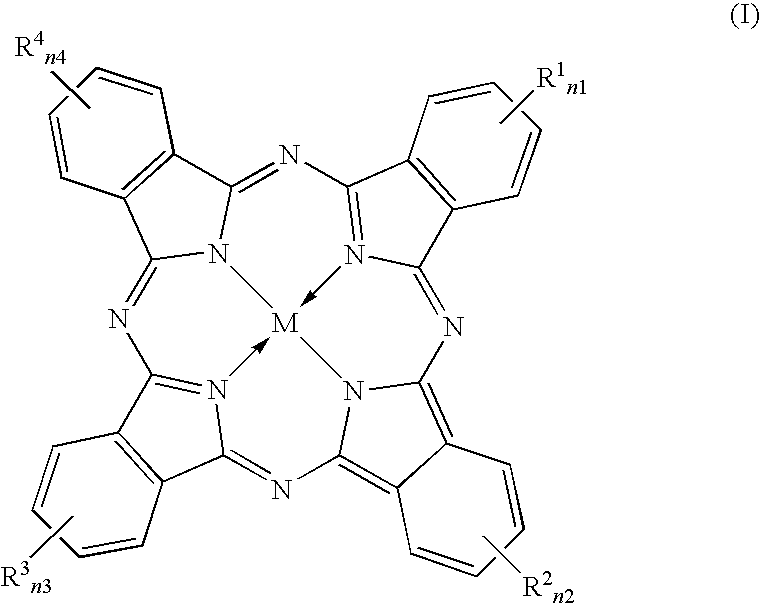Antiviral agents, antiviral fibers and antiviral fiber structures
a technology of antiviral fibers and agents, applied in the direction of dyeing process, biocide, bandages, etc., can solve the problems of posing a threat to humans, difficult to prevent viruses from entering a country, and no report on a growth inhibitory effect on a virus that grows
- Summary
- Abstract
- Description
- Claims
- Application Information
AI Technical Summary
Benefits of technology
Problems solved by technology
Method used
Image
Examples
example 1
[0072]An antiviral rayon fiber was manufactured by a direct staining method. 30 kg of rayon fiber (fineness: 2.2 dtex, fiber length: 38 mm) was dipped into a 600 L of cobalt (II) phthalocyanine disulfonic acid disodium salt aqueous solution of 0.3% on weight fiber (owf), (bath ratio=1:20) and then agitated for 30 min. at temperature between 65° C.-100° C. to stain the rayon fiber. As a dyeing auxiliary, 30 g of sodium sulfate was added for 1 liter of the dye solution. And the stained rayon was washed with water, dewatered and dried, obtaining antiviral fibers carrying cobalt (II) phthalocyanine disulfonic acid disodium salt.
example 2
[0073]An antiviral rayon fiber was manufactured by an ionic dyeing method. Into a 10 L liquid mixture of 50 g / L Cationon UK aqueous solution, which is available from Ipposha Oil Industries Co., LTD. and is trade name, and of 15 g / L sodium hydroxide aqueous solution, 1 kg of rayon fiber as same as in Example 1 was dipped and reacted for 45 min. at 85° C. under a bath ratio of 1:10. The resulting cationized rayon fiber was well washed with water, and then dipped into a 10 L of sodium hydroxide solution (pH=12) mixed with 1 part by mass (1% owf) of cobalt (II) phthalocyanine monosulfonic acid and cobalt (II) phthalocyanine disulfonic acid for 100 parts by mass of the fiber, and agitated for 30 min. at 80° C. to stain the rayon fiber. The resulting stained rayon fiber was well washed with water, and dried. Thereby an antiviral fiber carrying cobalt (II) phthalocyanine monosulfonic acid sodium salt and with cobalt (II) phthalocyanine disulfonic acid disodium salt was obtained.
example 3
[0074]The cationized rayon fiber in Example 2 was well washed with water and then dipped into a 10 L of sodium hydroxide solution (pH=12) mixed with 1% owf of iron (III) phthalocyanine monosulfonic acid and iron (III) phthalocyanine disulfonic acid, and agitated for 30 min. at 80° C. to stain the rayon fiber. The resulting stained rayon fiber was well washed with water and then dried thereby an antiviral fiber carrying iron (III) phthalocyanine monosulfonic acid sodium salt and iron (III) phthalocyanine disulfonic acid disodium salt was obtained.
PUM
| Property | Measurement | Unit |
|---|---|---|
| length | aaaaa | aaaaa |
| temperature | aaaaa | aaaaa |
| length | aaaaa | aaaaa |
Abstract
Description
Claims
Application Information
 Login to View More
Login to View More - R&D
- Intellectual Property
- Life Sciences
- Materials
- Tech Scout
- Unparalleled Data Quality
- Higher Quality Content
- 60% Fewer Hallucinations
Browse by: Latest US Patents, China's latest patents, Technical Efficacy Thesaurus, Application Domain, Technology Topic, Popular Technical Reports.
© 2025 PatSnap. All rights reserved.Legal|Privacy policy|Modern Slavery Act Transparency Statement|Sitemap|About US| Contact US: help@patsnap.com



